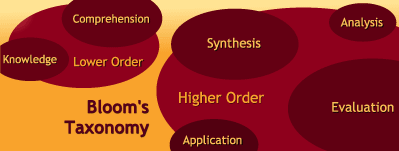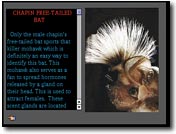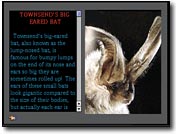
Develop engaging projects that meet curriculum standards and require higher-order thinking skills.

When I started doing project-based learning with my students, I noticed two immediate changes in my classroom. First, my students were far more interested in doing projects based on the content we were learning than they were in simply listening to me give a lecture on the topic. Second, attendance went up and classroom problems went down. These factors contributed to a higher degree of interest and involvement in what we were learning than I had ever had before.
Our first projects were simple and not very technically oriented. The students quickly learned that planning was the most critical part of the project process. Much to my delight, they soon realized that the process was actually more important than the final product. They discovered, for example, that if they sat down at a computer and tried putting a project together without any planning, it took much longer to get anything completed. Why? Because they were always changing something as they worked. Then, that change would affect something somewhere else that would have to be changed, and so on. As a class, we decided that our first criteria for doing projects had to be a thorough planning process.
Soon, projects that were being developed as part of our class were being used by social studies teachers, science students, the Library Media Specialists. Our work began to have value outside of the classroom. Students began receiving requests from other departments to use their planning and project-building skills to create multimedia products for those disciplines. Real people wanted and stood to benefit from the work they were doing.
...meeting the expectations of someone other than their teacher was a definite eye-opener...
Before long, we were getting requests from community organizations who had heard about the students’ projects. They wanted to meet with these talented teams of students and have them complete important projects for them. The students suddenly had an opportunity to do “real” work, not an assignment for a class.
The reality of designing a project and meeting the expectations of someone other than their teacher was a definite eye-opener, and doing “real world applications” took on an entirely new meaning. My students rose to the challenge and completed some awesome work for several community organizations.
Knowing their work had to meet the scrutiny of the community made the students more aware of how important it is to be able to take their knowledge and demonstrate how that knowledge can be useful to others. In other words, they had to know what they were talking about or the whole world would see their mistakes. They also gained a great deal of satisfaction (and a lot of self-confidence) when they were recognized for the work that they had done.

So, what is project-based learning and why might teachers benefit from using it in their classrooms? This process isn’t as hard as you think and is an extremely powerful tool for learning in the classroom.

Before you can build a successful project (and that’s what we want our students to be able to do, isn’t it?) you have to create a design or plan for that project. In this design, you want to:
Because project work occurs over a long period of time, it needs to address larger concepts, or enduring understandings, within a discipline. Enduring understandings are the ideas behind WHY we teach the content in our curriculum. Project work that leads to enduring understanding requires students to have a strong content knowledge base, and requires them to apply that knowledge to evaluate, synthesize, and compare; thinking skills that are high on Bloom’s Taxonomy.
We all have a mandated curriculum that tells us WHAT to teach and WHEN, but many times we aren’t given clear and concise reasons WHY we are teaching these topics. To get to the WHY, start with the WHAT. Look at your district curriculum or the scope and sequence for your course. Choose a topic that has potential for engaging students and that can help you lead them to larger ideas. Once you have determined exactly what students should understand when they finish a project, framing project work becomes much easier.
Write an essential question that will drive the project. Essential questions are those questions which do not have one correct answer. They question what we consider to be truth and show incongruities in our thinking. Project work that answers an essential question assumes that much “traditional” teaching has already been done. We can’t expect students to be able to ask the right questions or challenge assumptions if they are unfamiliar with the history, scientific theory, or mathematical rules that apply. We are not removing content knowledge or information, just asking students to delve deeper into it and apply it to solve problems or create new products.
An authentic task asks students to apply information to solve problems, determine connections, and assess relationships. As they complete the task, students gain the knowledge, skills, and understanding necessary to answer the essential question.
While you will complete a summative assessment of the final product and product presentation, most assessment will occur during the project-building process. For example, you can assess tangible performances that appear on a written project vision, storyboard, and rough draft. There are learning events that occur even if the final product is incomplete. These include participating in group discussions, sharing resources and ideas, helping other students, taking risks, using primary resources, and locating quality sources of information.
You need to determine exactly how students will demonstrate their understanding as they build a product or solve a problem to complete the task. Remember that the learning occurs over a long period of time; the final product may not include all of the information about the learning. Part of project work should require students to formally present their work. This is a great way get feedback from the entire group about the process, and to celebrate the work the students have done. You may also want to have students keep a journal to record their learning along the way.

You need to assess the value of your project idea. The most important issues are the essential question and assessment. First, as a result of completing the project, will students be able to answer the essential question? Second, can the product serve to ensure or assess student understanding? Is there an obvious link to standards? Will someone watching from the outside be able to see the connection?
You also need to evaluate the task according to available classroom resources. Can the task be completed in the time allotted? Is this the best use of your classroom time? Does your classroom have the necessary resources (space, technology, and information) for students to complete the project? Do you have access to other labs, the library, or other instructors? Can you find enough sources of information (web sites, books, videos, experts) for the students to find their answers?
First things first, you need to celebrate. Implementing project work, especially involving student self-direction, requires risk, time, energy and commitment. You are to be commended. Even if the final product didn’t turn out like you had expected, celebrate the many positive learning moments that occurred along the way. Learning is a journey, not a destination. It is the process, not the product, that impacts student learning.
Facilitating a project, acting as a guide and showing students how to learn rather than merely dispensing knowledge, demonstrates a model of how students can approach new ideas, information, and problems. Providing students with skills for metacognition and self-direction will help them in all subject areas as well as real life.

If you are new to integrating technology in your classroom, designing a project from scratch can be overwhelming, especially since the project is not about technology activities or lessons, but long-term student project work. You may want to browse sample projects, sample tasks, and lesson ideas to find a shorter idea you can implement right away or even a project that fits with your curriculum. Once you feel comfortable using technology tools in your classroom, you will be ready to jump into your own project design.
Creative Educator can help you bring project-based learning to your school.
Learn More8 first projects to get students using technology
Creative, digital book reviews
Fun and powerful ideas with animated characters

Wixie
Share your ideas, imagination, and understanding through writing, art, voice, and video.

Rubric Maker
Create custom rubrics for your classroom.

Pics4Learning
A curated, copyright-friendly image library that is safe and free for education.

Wriddle
Write, record, and illustrate a sentence.

Get creative classroom ideas delivered straight to your inbox once a month.
Topics